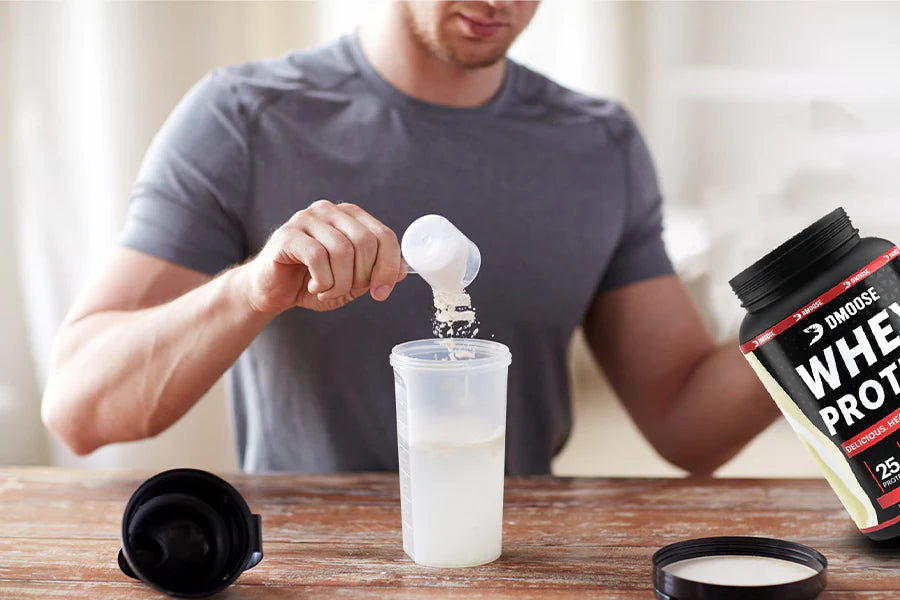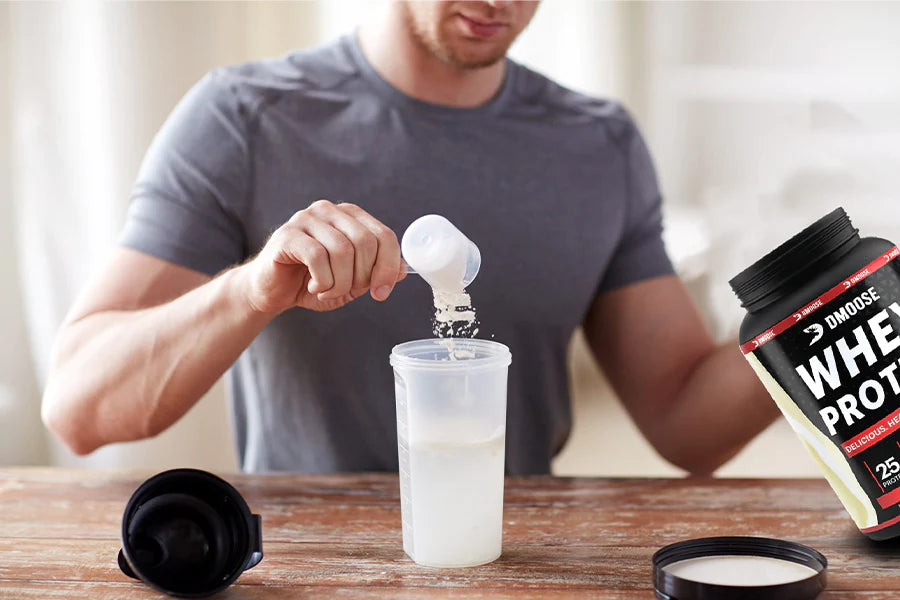

A well-known nutritional supplement that athletes, bodybuilders, and fitness enthusiasts use to build and maintain muscle mass is whey protein. Its popularity stems from its high-quality protein content and rapid digestibility. However, to ensure its safety and efficacy, it’s important to understand when, how, and how much to consume based on your individual fitness goals, lifestyle, and dietary needs.
This article will walk you through the essentials of how to use whey protein effectively, whether you are just starting out with supplements or want to make the most of your current routine. But before we get into that, let us first understand what whey protein is and why it’s so highly regarded in the world of nutrition and fitness.
Contents
What Is Whey Protein?
Whey is a complete protein that has all the nine essential amino acids the body requires to perform vital body functions. Extracted from milk during the cheese-making process, it is a high-quality protein that constitutes only about 20% of the total protein in milk. Yet, it is quite effective for muscle recovery and growth. Additionally, it can help:
Build, repair, and maintain tissues, including muscles, organs, and skin
Produce enzymes and hormones that regulate critical physiological functions
Provide essential amino acids to support immune health and assist in the production of neurotransmitters. Whey Protein Supplements
While consuming milk can provide some whey protein, the amount is relatively small and often insufficient to meet higher protein needs, especially for those with increased physical demands. Whey protein supplements are a popular choice because of this. There are generally three types of whey supplements: whey concentrate, whey isolate, and whey hydrolysate. Each has a different amount of protein, how it is processed, and how quickly it is absorbed. In order to ensure that the form you choose is compatible with your fitness and dietary objectives, it is best to make this decision under the guidance of an expert. Range of Nutrabox Whey Protein The Nutrabox Whey Protein range offers both flavored and unflavored options, available in concentrate and isolate forms. These products are free from fillers, added sugar, or unnecessary additives. Plus, they are all certified for their purity and quality, ensuring that you get a safe, trustworthy product that meets high nutritional standards.
A brief description of each line item can be found here. 100% Whey Protein – Made with a blend of grass-fed whey isolate and concentrate, this pure and clean supplement supports muscle recovery and growth.
One of India’s best raw whey supplements is this 100% raw whey protein made with 80% whey concentrate. The products provide 24 grams of clean protein, which can aid in fat loss and speed up muscle recovery. Ripped Whey Isolate – This is one of India’s first Trustified Certified protein supplements, delivering 27g of undenatured protein per 33g serving. It has a balanced blend of essential and non-essential amino acids and supports muscle growth, recovery, strength, endurance, and fat loss.
Fusion Whey – This supplement has a combination of whey and pea protein in a 1:1 ratio. A complete amino acid profile for muscle growth, strength, and recovery is provided by this blend, which is quick to absorb and easy to digest. The next section explores how you can use whey to maximize its benefits.
How To Use Whey Protein?
How whey protein is used largely depends on your fitness goal. Whether you are aiming to build muscle, lose fat, or support overall health, it is vital to align your intake with your needs.
To use whey safely and effectively, follow these basic guidelines.
1. Determine your dosage:
Different individuals need different amounts of protein based on their age, weight, fitness goals, and overall health status. For example:
A sedentary individual may need around 0.8 g of protein per kg of body weight, whereas those indulging in light activities like walking may require 1g of protein per kg of body weight daily.
Similarly, individuals who exercise regularly and do weight training and cardio may need 1.2 to 1.5g of protein per kg of body weight.
On the other hand, athletes and those engaging in intense physical activities may need to increase their protein intake to around 1.6 to 2 g per kilogram of body weight per day.
Based on your daily protein requirements, how much whey protein you should take is determined. Your healthcare professional or a certified nutritionist can help make these estimations with precision.
2. Choose the right type:
Whey is available in three different forms—whey concentrate, whey isolate, and whey hydrolysate. Whey concentrate is the most common and affordable protein form for beginners. On the other hand, whey isolate is a form of protein that is absorbed quickly and has a relatively higher protein content. It is usually recommended for athletes and bodybuilders, especially in the cutting phase. Whey hydrolysate is a pre-digested protein most suitable for athletes aiming at speedy recovery and those with sensitive guts. However, it costs a lot.
3. Time your intake:
The timing of your whey intake is crucial to its effectiveness. Consuming whey 30-40 minutes after a workout can help muscle recovery and growth. On the other hand, taking it first thing in the morning on an empty stomach can help speed up metabolism and prevent muscle breakdown. Then, consuming whey between meals or as snacks can help maintain muscle protein synthesis throughout the day.
4. Make use of its adaptability:
Whey is a versatile protein that can be consumed in various ways. It comes in both flavored and unflavored forms, which can be mixed with water or milk to make a quick shake. You can also add whey to smoothies, cereals, baked goods, or overnight oats to easily boost your daily protein intake. These options make it simple to include whey in your diet without much effort.
If you are using whey for the first time, you may experience some side-effects, such as bloating and gas. Lactose intolerant individuals and those who consume large amounts of whey may experience these issues. Opting for whey isolate, a low-lactose form of whey, staying optimally hydrated, and consuming whey in smaller amounts and gradually building up on its quantity are some ways you can whey and reap its full benefits while minimizing any adverse reactions.




